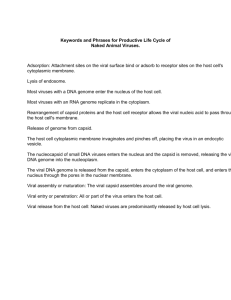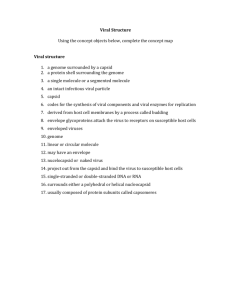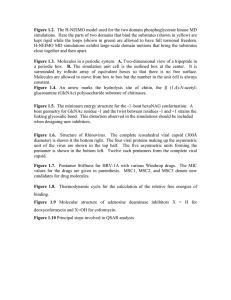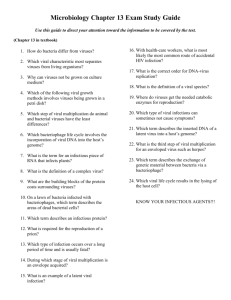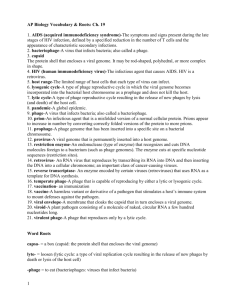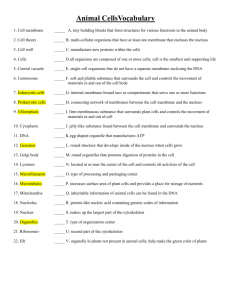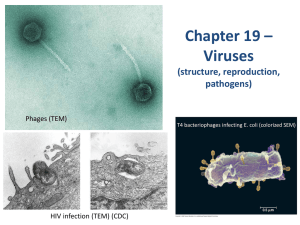Keywords and phrases for productive life cycle of enveloped viruses
advertisement
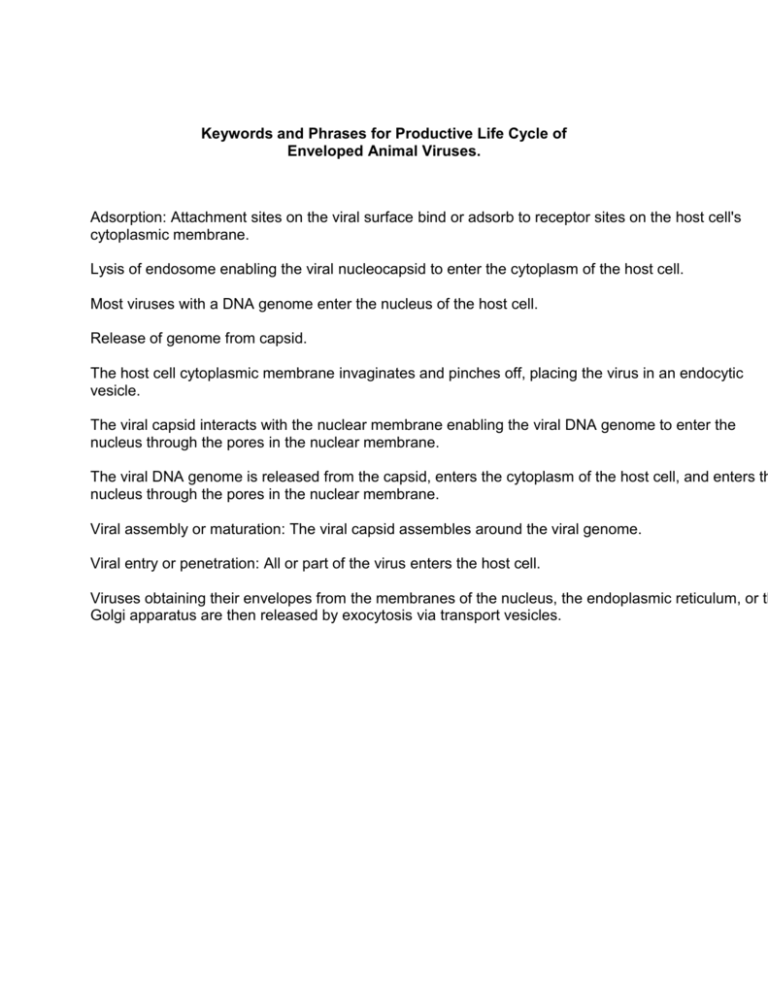
Keywords and Phrases for Productive Life Cycle of Enveloped Animal Viruses. Adsorption: Attachment sites on the viral surface bind or adsorb to receptor sites on the host cell's cytoplasmic membrane. Lysis of endosome enabling the viral nucleocapsid to enter the cytoplasm of the host cell. Most viruses with a DNA genome enter the nucleus of the host cell. Release of genome from capsid. The host cell cytoplasmic membrane invaginates and pinches off, placing the virus in an endocytic vesicle. The viral capsid interacts with the nuclear membrane enabling the viral DNA genome to enter the nucleus through the pores in the nuclear membrane. The viral DNA genome is released from the capsid, enters the cytoplasm of the host cell, and enters th nucleus through the pores in the nuclear membrane. Viral assembly or maturation: The viral capsid assembles around the viral genome. Viral entry or penetration: All or part of the virus enters the host cell. Viruses obtaining their envelopes from the membranes of the nucleus, the endoplasmic reticulum, or th Golgi apparatus are then released by exocytosis via transport vesicles.
